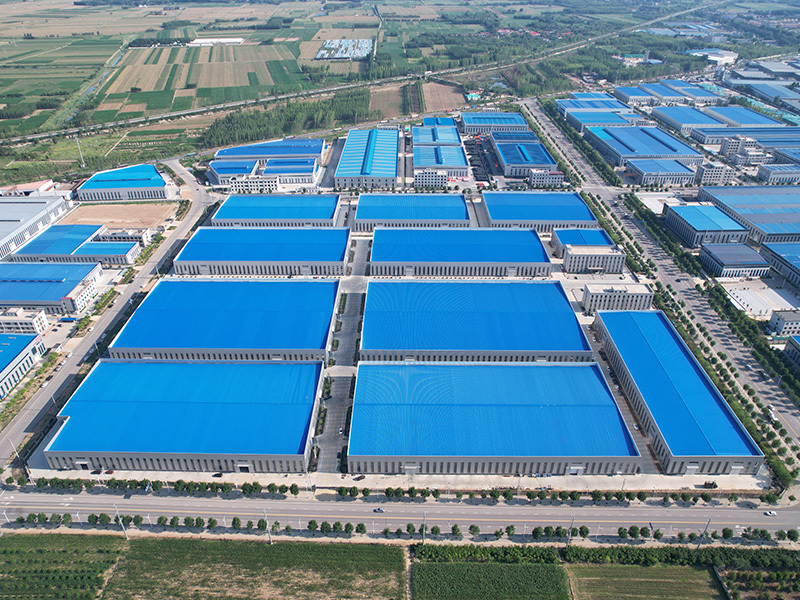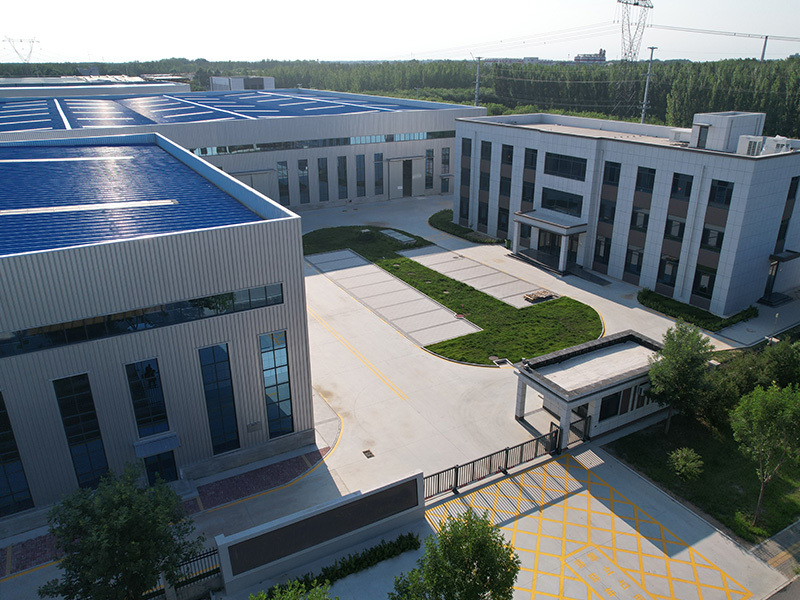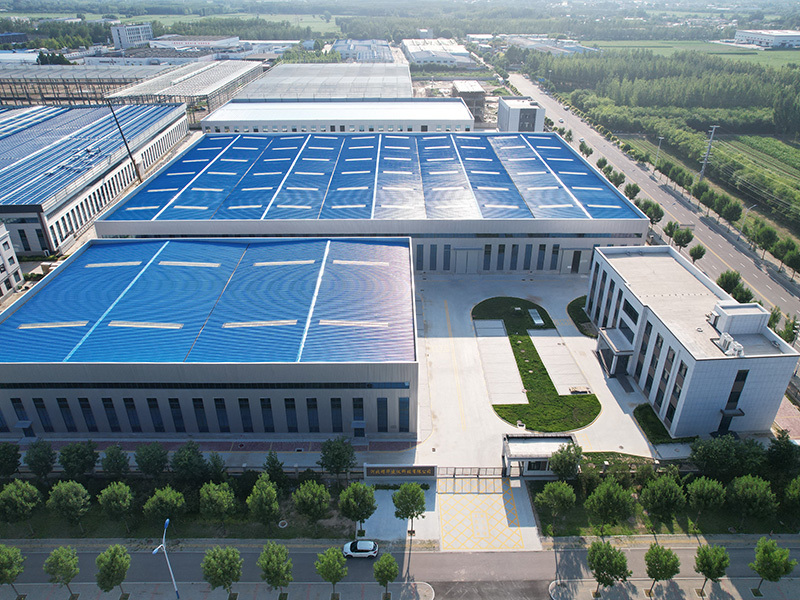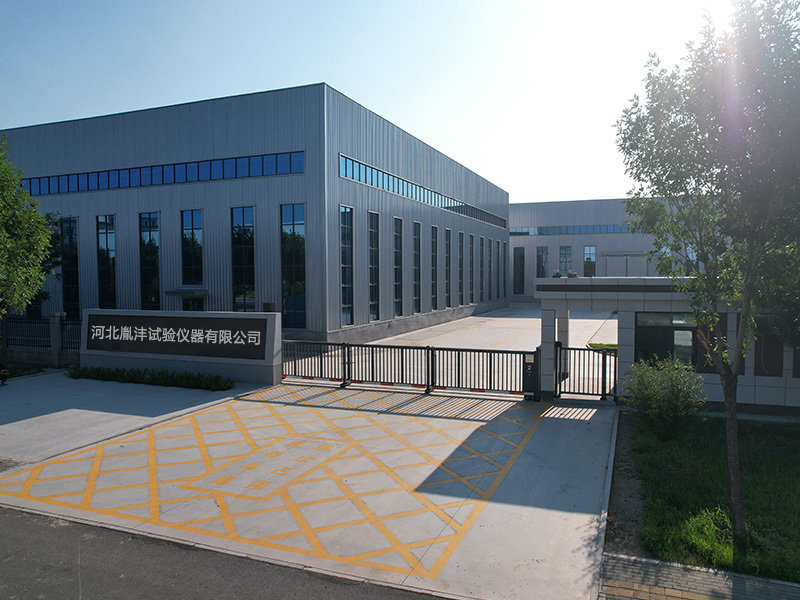

- Product Describe
-
I. Uses:
The fully automatic mixing machine is an essential piece of equipment for preparing asphalt-aggregate or cement-aggregate mixture specimens. This machine fully complies with all the requirements outlined in the Ministry of Transport’s JTG E20-2011, "Test Procedures for Asphalt and Asphalt Mixtures in Highway Engineering." Currently, it has been widely adopted in laboratories across research, construction, and supervision departments within the highway system.
II. Structure and Operating Principle:
Figure 1: Structural Principle Diagram
1-Body 2-Control Panel 3-Positioner 4-Stirring Motor 5-Stirring Head 6-Stirring Paddle
7- Temperature sensor 8- Heating pot 9- Tightening handle
The machine's structural principle is illustrated in Figure 1. It consists of three main components: the heating pot, the stirrer, and
Lifting and lowering mechanism. The heating pot temperature can be set arbitrarily within the range of room temperature to 250°C and is automatically controlled for precise temperature management. The stirrer consists of a stirring head, a motor, and a stirring paddle. During operation, the paddle performs both orbital and rotational movements inside the pot, thoroughly mixing the materials. The stirring time is controlled by a timer, which can be set freely between 1 and 9,999 seconds. The lifting and lowering mechanism includes components such as a motor, belt reducer, and lead screw, enabling the stirrer to move up and down. When adding or removing materials, the stirrer rises to its highest position; conversely, during the actual mixing process, it descends to the lowest position. Figure 2 illustrates the machine’s three distinct operational states.
(1) Feeding materials (2) Mixing (3) Discharging
Figure 2: Three Different Operating States of the Mixer
III. Key Technical Specifications
Mixing capacity: 10 liters / 20 liters
Heating pot temperature range: Room temperature to 250°C (settable as desired)
Temperature control accuracy: ±3°C
Mixing time: 1–9,999 seconds (arbitrarily set)
Agitator blade speed: Revolving at 48 RPM
Rotates at 80 RPM
Working Conditions
Temperature: -10°C to 40°C
Relative humidity: Not more than 80%
Power supply voltage: ~220V ±10%, Current: 20A
IV. Instructions for Use
1. Machine Installation
After unpacking the machine, proceed with installation. The installation surface should have a solid foundation, and sufficient clearance must be maintained from walls and nearby fixtures.
Greater than 0.6 meters. During installation, place the machine on a concrete foundation, ensuring it remains stable and free from vibrations—this is sufficient for secure positioning. Use anchor bolts to fix the machine in place. For ease of operation, the machine is equipped with a main power switch. Simply plug in the power cord, and the machine will be ready for setup. To start or stop the machine during operation, just press the "Main Power" button on the panel.
When installing the power supply, the machine should be properly grounded to prevent electric shock and injury.
2. Operation Panel Instructions
Human-Machine Interface
Figure 3: Operation Panel
(1) Status Indicator Light
Temperature Control: When the controller is in temperature control mode, the temperature control indicator light will illuminate.
Heating: The indicator light turns on when the heater is in operation.
Stirring: The indicator light turns on when stirring starts.
Rising: The indicator light turns on when the lifting motor is in the rising position.
Descending: The indicator light turns on when the motor is descending with increased speed.
Maximum Limit: This indicator light turns on when the limit switch at the maximum position is activated.
Lower limit: The indicator light turns on when the limit switch activates.
- Display window area
Temperature Display Area—Displays in real time the object temperature currently measured by the sensor.
Timing Display Area—When stirring starts, this area shows the elapsed stirring time. As the set time approaches, the display area flashes. Once the preset time is reached, the stirring automatically stops, and the lifting motor begins to rise automatically.
(3) Button Input Area
: In standby mode, tap to enter the target temperature setting interface. Once inside, the digital display will flash, allowing you to adjust the temperature value. After completing the adjustment, press the button again to save the new setting and exit the temperature setup interface.
: In standby mode, tap to enter the搅拌 time setting interface. Once inside, the digital display in the timer area will flash, allowing you to adjust the timer value. After completing the adjustment, press the button again to save the set value and exit the timer setting interface.
: Entering will exit the temperature control mode.
: Start stirring—once activated, the timer display area will begin counting down. While stirring is in progress, you can tap this button to pause the mixing process.
: Manually reset to zero, then turn off the搅拌.
: The three buttons control the lifting and lowering motors. While the system is moving upward, pressing the "down" button will have no effect—instead, you must first press the emergency stop button, then the "down" button. Conversely, when the system is descending, pressing the "up" button won’t work; you’ll need to first activate the emergency stop button, followed by the "up" button.
V. Operating Procedures
1. Preparatory Work
Once the power is turned on, all components immediately enter the ready state. First, preset the mixing time and heating temperature according to the procedure or operational requirements. When the "Temperature Control" button is pressed, the temperature-controlled heating system begins to operate. Within about 30 minutes, the inner wall of the pot will reach the set temperature, at which point the machine can start working.
2. Packing material
Press the "Raise" button on the control panel, and the stirring head will automatically move to its highest position. At this point, pour the preheated mixture into the pot.
3. Mixing
Press the "Lower" button, and the mixer will automatically move to its lowest position, extending into the pot. Then, press the button located in the middle of the control panel. “ “Button—then the搅拌桨 starts stirring. When the preset time is reached, it automatically shuts down. If an emergency occurs during the stirring process, simply press the “Emergency Stop” button, and the stirrer will immediately cease operation.”
To reduce the resistance when lowering the agitator, first start the mixer and then press the "Lower" button to lower the agitator.
4. Discharge
Press the "Raise" button to lift the mixing head to its highest position, then use the handle to loosen the locking nut, opening the locator. Next, carefully invert the pot 90° using the handle. Use the material-scooping spoon to remove the mixture, allowing it to slide down onto the mold via the sliding plate—and finally, prepare the sample as needed.
5. Cleaning
After the mixture has been thoroughly blended and the test specimens prepared, turn off the power supply and clean the equipment. In particular, ensure that no asphalt residue or debris remains on the heating pot, sliding plates, or搅拌桨.
6. Maintenance and Upkeep
1. The lead screw and guide shaft of the lifting mechanism should be regularly lubricated with grease.
2. The reducer of the mixer should have its lubricating oil changed once a year.
3. When not in use for an extended period, the machine should be covered to prevent dust from entering.
4. Protect the exposed wires carefully—do not allow them to bear any load, and ensure they are not punctured by sharp objects or crushed under heavy weights.
VII. Precautions
1. When the heating pot reaches the set temperature, there is also a temperature overshoot phase. This is because, even after the heater stops heating, the heat stored in the heater itself continues to transfer into the heating pot, causing the temperature to keep rising briefly after heating has ceased.
2. When testing the temperature control system, a certain amount of heating material—such as pebbles—should be placed inside the heating pot.
Sand, water, and other materials are all suitable, as they help transfer the heat from the surface of the heating pot to the object being heated, thereby minimizing temperature overshoot. Otherwise, the temperature inside the heating pot could rise far above the preset level, leading users to mistakenly believe that the temperature-control system is malfunctioning.
3. Temperature Error:
The sensor of the temperature controller measures temperature at the outer surface of the heating pot, which may result in a slight discrepancy compared to the temperature of the heated material located at the center of the pot. This is a normal occurrence; users should rely on the set temperature during operation.
4. During storage and transportation, the instrument is inevitably exposed to humid air, which can lead to varying degrees of decline in electrical insulation performance—particularly affecting the heater, whose insulation may drop more significantly. At the initial stage of power-on, users might experience mild tingling sensations due to electromagnetic induction. However, once the heating switch is turned on, these effects usually subside within a few minutes, restoring normal operation. Therefore, it is essential to ensure reliable grounding before use, with the grounding terminal connected to the dedicated ground hole on the power outlet. Otherwise, all consequences will be your own responsibility.
5. The lifting rod should be regularly lubricated with grease, at least once per shift.
Spare part: 1 lifting V-belt (installed on the lifting rod inside the chassis)
Spare parts: material-handling scoop, discharge slide plate.
6. The machine must be connected to a ground wire!!! While the machine is operating: Do not put your hands or any other objects into the heating pot to avoid accidents!!!
Company Profile
Hebei Yinfeng Experimental Instrument Co., Ltd. is a high-tech enterprise dedicated to the research and development, production, and sales of experimental instruments. The company is headquartered in Hebei Province, relying on the strong industrial foundation and technological innovation resources in the Beijing Tianjin Hebei region. It is committed to providing high-precision and high reliability testing equipment and solutions for material testing, engineering quality control, scientific research experiments and other fields.




Customized Delivery Process
We provide customers with full-process services ranging from pre-sale consultation, customized solution design, equipment installation and commissioning to after-sale technical support.
Online Communication
Provide Custom Drawings
Merchant Quotation
Sign A Contract
Processing And Production
Packaging And Distribution
Confirm Receipt Of Goods
Successful Transaction
Previous:


Fully Automatic Asphalt Mixing Plant
If you need customized products, Contact US !
Category
Tag list
Request a Quote
We will contact you within one working day. Please pay attention to your email.
Related Products
Content update in progress







